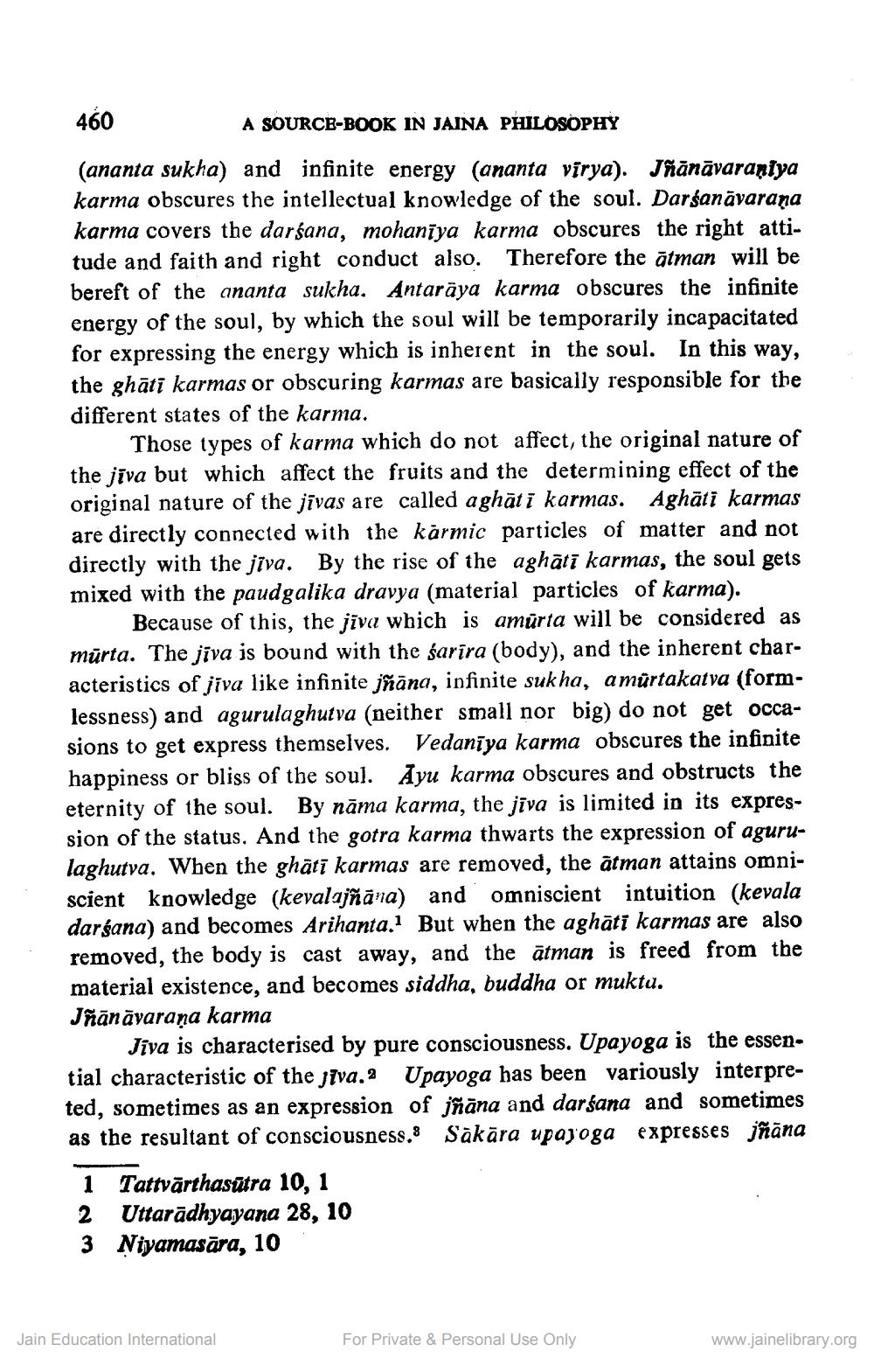________________
460
A SOURCB-BOOK IN JAINA PHILOSOPHY (ananta sukha) and infinite energy (ananta vīrya). Jñānāvaraniya karma obscures the intellectual knowledge of the soul. Daršanāvarana karma covers the darśana, mohaniya karma obscures the right attitude and faith and right conduct also. Therefore the ātman will be bereft of the ananta sukha. Antarāya karma obscures the infinite energy of the soul, by which the soul will be temporarily incapacitated for expressing the energy which is inherent in the soul. In this way, the ghātī karmas or obscuring karmas are basically responsible for the different states of the karma.
Those types of karma which do not affect, the original nature of the jiva but which affect the fruits and the determining effect of the original nature of the jīvas are called aghātī karmas. Aghāti karmas are directly connected with the karmic particles of matter and not directly with the jiva. By the rise of the aghātī karmas, the soul gets mixed with the paudgalika dravya (material particles of karma).
Because of this, the jīva which is amurta will be considered as mūrta. The jīva is bound with the sarīra (body), and the inherent characteristics of jiva like infinite jñāna, infinite sukha, a murtakarva (formlessness) and agurulaghutva (neither small nor big) do not get occasions to get express themselves. Vedanīya karma obscures the infinite happiness or bliss of the soul. Ayu karma obscures and obstructs the eternity of the soul. By nāma karma, the jīva is limited in its expression of the status. And the gotra karma thwarts the expression of agurulaghutva. When the ghātī karmas are removed, the ātman attains omniscient knowledge (kevalajñāna) and omniscient intuition (kevala darśana) and becomes Arihanta. But when the aghāti karmas are also removed, the body is cast away, and the ātman is freed from the material existence, and becomes siddha, buddha or muktu. Jñānāvaraņa karma
Jiva is characterised by pure consciousness. Upayoga is the essential characteristic of the jiva. Upayoga has been variously interpreted, sometimes as an expression of jñāna and darśana and sometimes as the resultant of consciousness. Sākāra upayoga expresses jñāna
1 Tattvārthasūtra 10, 1 2 Uttarādhyayana 28, 10 3 Niyamasāra, 10
Jain Education International
For Private & Personal Use Only
www.jainelibrary.org




